This article will try to remain non-technical, though it is important to know what forms of knowledge were required for television to happen. The sources of these discoveries are often buried in ancient history and the many efforts of numerous people that were made over the centuries.

Part 1 deals with the sources of our early knowledge. The stepping stones needed for civilisation to make progress, which date back to the ancient Greeks, for without mathematics we would not have made advances in architecture, engineering, chemistry, electronics, optics, and hence the industrial and computer revolutions.

Part 2 shows how imagination played an important role in not only arriving at new concepts but predicting where the future may lead. The science fiction of yesteryear soon became the reality of today as the properties of light were explored and substances that reacted to it led to photography and the electric light, and as the properties of magnetism and electricity became understood, then more creative uses for these phenomena were found.

Part 3 tells how all the ingredients gradually came together for television to become a reality. The discovery of cathode rays, wireless propagation, the gadgetry and people who made it all happen.

Part 4 tells how some of the early devices were primitive, being made from bicycle parts, until overtaken by advances in the electronics field. There were many people who contributed to the development of television and it was not always fair in who benefited most from the discoveries. As isolated as Australia was in the very early days, news of these discoveries reached here and the locals began experimenting.

Part 5 explains how the competition between the mechanical method of sending images soon gave way to the superior electronic system, with practical applications gradually becoming mainstream as broadcasting organisations embraced this new field.

Part 6 tracks how television has evolved since the end of World War II with its spread through Britain, the United States and Europe until politicians in Australia started to take notice and contemplate how it should be introduced here. When it arrived in the capitol cities between 1956 and 1959, all licences were grant to newspaper publishers. The Labor party was keen for Australia to adopt a regime similar to the BBC, whilst the Liberal and Country party government introduced a hybrid of commercial and government broadcasting institutions. Australian workers at first enjoyed the opportunity to participate in a television set manufacturing industry, until the Whitlam government killed it by removing the protective tariffs.

Part 7 explores how television came to Western Australia and the battle to get enough viewers to make the industry viable. It really was the pioneering days, as the exchange of programs between other countries, with different television systems was fraught with technical problems. The industry changed greatly as governments changed rules for operating television stations and new technological developments reduced the isolation Western Australia experienced. The early isolation enabled the local stations to maintain a high level of autonomy, but this was eroded as laws were amended, telecommunications between the States improved and stations changed hands. Centralisation and networking completely altered the television landscape, with Sydney and Melbourne becoming the hubs, rather than each city running its own service. Now the industry faces new challenges of a global nature, as the Internet joins everyone together to enable a great variety of services to be delivered. The speed of change is accelerating as new innovations and business models put the old media models at risk. Those who cant keep up will get left behind as the media moguls try to grasp the new notions and control them. Not all are having a lot of success, as newspapers are in decline and new threats arrive for the advertising dollar. The delivery method for television is undergoing a dramatic transition, which is exciting for the viewer, but not necessarily so for the broadcaster who must anticipate correctly which path to take for then to survive.
Though the story told here may at first seem convoluted, it reflects how things developed. Many ideas were tried and many failed. It required people of different backgrounds and diverse disciplines to make the important discoveries, with each being stepping stones for the other. The development was an international affair that crossed many cultures from the earliest days to the present.
PART 1
Most often television is remembered for the famous performers and presenters who appeared on camera, rather than the army of scientists, experimenters, engineers and technicians, who made it all technically possible in the first place. Each early contributor had to overcome challenges to make vital discoveries. Some endured great hardship, whilst others were ridiculed. There was also opposition from other contestants trying to claim the glory. Particularly those wanting to monetize the new technology and accumulate great wealth ahead of their competitors. On sad occasions the person who made a vital discovery was robbed of the reward by forces working against them.
But before all that could happen, there needed to be an understanding of magnetism, electricity and light.

Magic and Superstition
Ancient people first discovered the property of magnetism in lodestone, one of only two minerals that is found naturally magnetised.
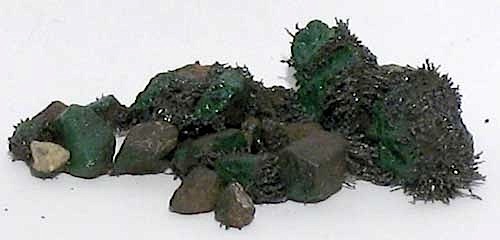
When suspended so it can pivot, it became the first magnetic compass. Though in the case of electricity, they relied on myth and magic to explain lightning and to ease their fears. The ancient Greeks believed that the king of all the gods, Zeus, threw lightning down from the heavens to show his anger at the people below. Greater clarity had to wait until 1752, when Benjamin Franklin (1705–1790) performed his legendary kite experiment during a thunderstorm, in which he conclude that lightning was an electrical current.
As with all the important discoveries over time, it has been a case of crawl before you can walk. Though one suspects that Benjamin Franklin was lucky he could still walk after that experiment.

Years ago our ancestors explained the unknown by superstition and religion, and many people still do. Other more inquisitive folk became philosophers and scientists.
We still marvel at the architectural and engineering achievements of the ancient Egyptians, Greeks, Babylonians and Romans, and wonder at the methods they used. Many of their principles have since filtered down to us today. Countless thinkers have provided the stepping stones that allowed followers to beat a path to enlightenment.
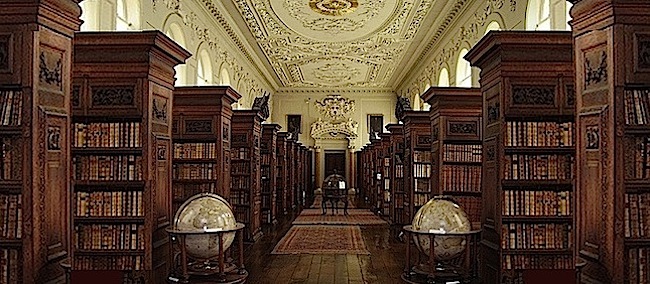
Theories about unusual happenings were refined by the wise over time into laws, that added certainty about natural phenomena. In doing so this overcame thoughts of the supernatural, as the magical tricks were understood and their properties employed to good use.
Maybe there are other forces we have not discovered yet? Forces that can unleash powers that have alluded us, and realms which the ordinary person presently cannot imagine.
For pursuers of Quantum Theory are now telling us about some very odd things which question our knowledge of reality. This is causing much 19th century physics to be re-evaluated.
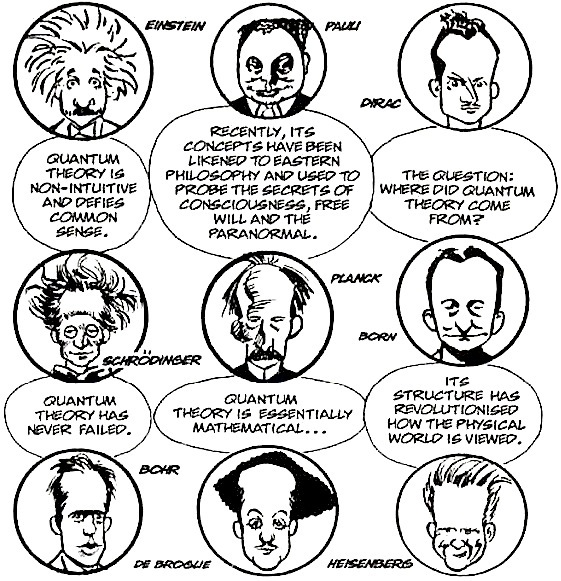
Quantum mechanics (also known as quantum physics, or quantum theory) is a branch of physics which deals with physical phenomena at microscopic scales, by providing a mathematical description of the dual particle-like and wave-like behaviour and interactions of energy and matter. Quantum mechanics is essential to understanding the behaviour of systems at atomic length scales and smaller.
In the everyday world, it is natural and intuitive to think of everything that is observable as having a definite position, a definite momentum, a definite energy, and a definite time of occurrence. However, quantum mechanics turns much of this on its head when explaining the behaviour of subatomic matter.
The laws of classical Newtonian physics still remain accurate in predicting the behaviour of everyday objects in everyday circumstances. Being matter the size of large molecules or bigger, at velocities much less that the speed of light.
The original television camera and picture tubes depended on subatomic particles, as electron guns were used to paint the picture on a television screen. These streams of electrons are also called cathode rays. The flow of electrons through a conductor also defines what electricity is. Scientific inquiry into the wave nature of light and the discovery of cathode rays led to the quantum theory notions, as people increasing came up with suggestions to explain unusual phenomena.
Electricity is said to travel down a conductor at the speed of light, as electrons move from atom to atom over the length of the conductor. Though if we visualise this as a pipe full of marbles, then as a new marble is pushed in one end, another marble will pop out the other. This seems instantaneous to the eye, like it happened at the speed of light, yet the individual marbles are not travelling at that speed. Electrons head down a conductor in very much the same fashion. Other ways to visualise electricity is to compare it to water moving down pipes. The water pressure equivalent is measured in Volts in electrical terms, whilst the amount of current flow is measured in Amps (Ampere) and the resistance to that flow is measured in Ohms. These are some of the basic units used in electrical formula, along with inductance and capacitance, which will be touched on later. Drawings that map out the complex flow of electricity are referred to as circuit diagrams, with symbols representing the different components.
One of the essential tools of Electronics is Mathematics, which dates back to ancient times… hence the more recent formula below is derived from this gift passed down to us today.
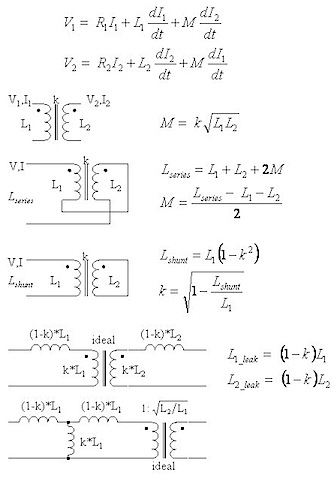
The Accumulation of Knowledge
Socrates (469–399 BCE) was a classical Greek Athenian philosopher who is credited as one of the founders of Western philosophy. He is remembered through the classical writing of students such as Plato (429–347 BCE), who was also a philosopher, mathematician, writer of philosophical dialogues, and founder of the Academy in Athens, the first institution of higher learning in the Western world. The great Greek philosopher and scientist Aristotle (384–322 BCE), was a student of Plato and teacher of Alexander the Great. He exerted a profound and pervasive influence for more than two thousand years. His writings cover many subjects, including physics, metaphysics, poetry, theatre, music, logic, rhetoric, linguistics, politics, government, ethics, biology, and zoology. The Greek mathematician, physicist, engineer, inventor, and astronomer Archimedes (287–212 BCE) is generally considered to be the greatest mathematician of antiquity and one of the greatest of all time. He is credited with designing innovative machines and was an influential source of ideas for scientists during the Renaissance (14th to the 17th century).
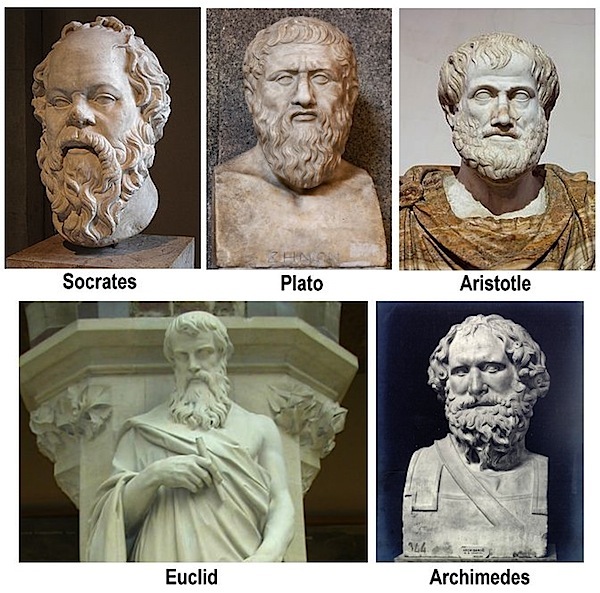
The Ancient Greeks were also responsible for Geometry, the branch of mathematics concerned with questions of shape, size, relative position of figures, and the properties of space. The Greek mathematician Euclid is often referred to as the “Father of Geometry”. Meanwhile, the roots of algebra can be traced to the ancient Babylonians. Then the Islamic mathematicians developed decimal fractions and considered the relationship between algebra and geometry.
Trigonometry has Greek and Indian origins, which were expanded by medieval Islamic mathematicians by the 10th century.
Interestingly, Aristotle and Euclid described a pinhole camera in the 5th and 4th centuries BC, which used a pinhole as a lens to project an image of the scene outside upside-down onto a viewing surface.
Electricity derives its name from the Ancient Greeks who knew that pieces of amber (fossilised tree resin) could attract lightweight particles after being rubbed. The amber becomes electrified by the triboelectric effect, in which certain materials become electrically charged after they come into contact with another different material through friction. Rubbing glass with fur, or a comb through the hair, can build up triboelectricity. The Greek word for amber is ηλεκτρον (“elektron”) and is thus the origin of the word ‘electricity’.

The triboelectric effect is the main cause of static electricity, whereas current electricity flows through wires or other conductors to transmit energy. In contrast, static electricity is an imbalance of electric charges within or on the surface of a material.

Unfortunately, over time we have been robbed of great learning opportunities, such as the enormous loss resulting from the burning of the Ancient Library of Alexandria, in Egypt, one of the largest and most significant libraries of the ancient world, and other forms of mass destruction by the hand of man.
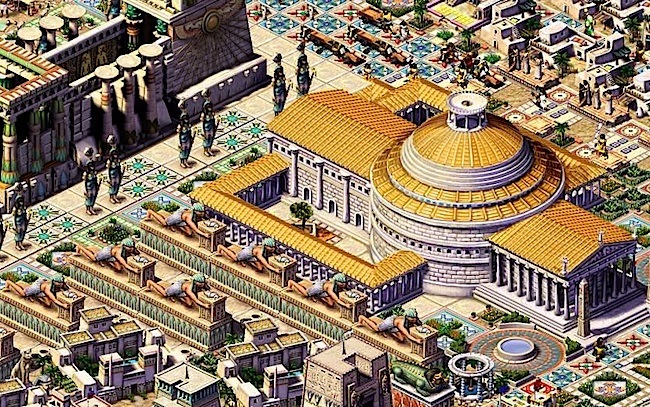
Despite the many intelligent people with a thirst for knowledge, it was the often hordes of vandals in history who demonstrated how barbarism and mass stupidity can prevail over common sense and the enrichment of society.
It is not always understood nowadays how noble and how widespread Greco-Roman civilization was, how it kept Europe, the Middle East, and Northern Africa peaceful, cultured and prosperous, and happy for centuries, and how much was lost when the savages and invaders broke upon it – Gilbert Highet – 1957
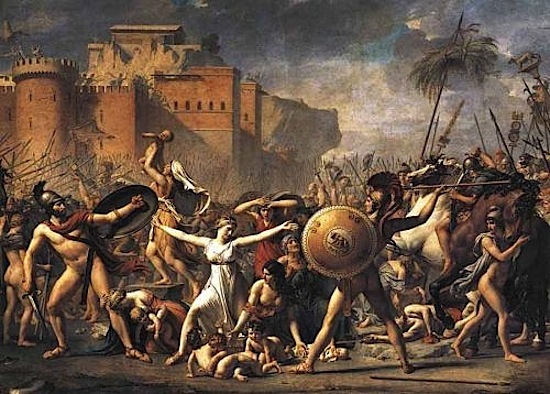
Gilbert Arthur Highet (1906-1978) was a Scottish-American classicist, academic, writer, intellectual, critic and literary historian.
Not everyone shares the same set of values and concerns. Despite this, tremendous progress has still been made… though maybe a lot slower that should have occurred in a more peaceful world… even though great technological advances were made in the name of war… from radar to the atom bomb. Many great minds will have perished during these conflicts.
Think of all we’ve forgone and the lost momentum resulting from the catastrophic collapse of various civilisations. We may already have found a cure for all conceivable ailments and diseases, or now be inhabiting other planets, such as Mars and beyond, if it were not for the plunderers and their short sighted and selfish gains.
Now theoretical physicist David Bohm (1917-1992) has suggested that the universe is a hologram, as explained in the book by American author Michael Talbot (1953-1992) called “The Holographic Universe” (1991). With so many incredible notions being put forward, we may one day find a way to eavesdrop on the past. It would certainly have advantages, as lost knowledge could be recovered and the truth discovered to many of the mysteries of history. No criminal could have a place to hide, and no crime committed that would go unsolved. Politicians and bureaucrats would be held accountable, as no secret could be kept. The media would have a field day, though those wishing to maintain power will most likely oppose such advances with as much fervour as the religious fanatics of the Middle Ages.
The Middle Ages period, known as the Dark Ages, was a time of intellectual darkness, barbarity and economic regression in Europe, which following the collapse of the Western Roman Empire. It generally held back advancement for five centuries, roughly between 500 and 1000 AD.
Added to the man made conflicts, which impacted learning, there were the recurring pandemics in human history, peaking in Europe between 1348 and 1350, and killing between 30 to 60 percent of Europe’s population, then occasionally reoccurring until the 19th century.
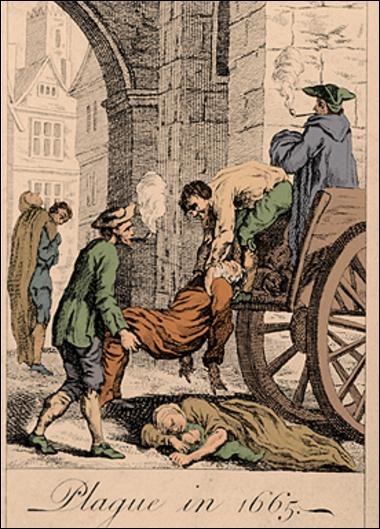
Religious fervour and fanaticism made scapegoats of various minority groups, as they were blamed for the crisis, and individuals with skin ailments were singled out and exterminated throughout Europe. Jews are burned alive during the Black Death in the belief they were somehow responsible.
Non conformist thinkers were often the victims of the Medieval Inquisition, being tortured or burnt at the stake as heretics. The Italian physicist, mathematician, astronomer, and philosopher Galileo Galilei (1564–1642), who has been called the “Father of Modern Observational Astronomy” and the “Father of Modern Physics and Science” was tried by a later Inquisition in 1615, found “vehemently suspect of heresy”, forced to recant, and spent the rest of his life under house arrest for describing the solar system as it really is, with the planets revolving around the sun.
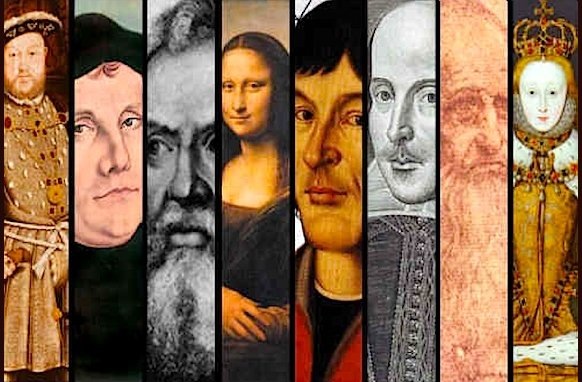
The Renaissance (14th to 17th century) was a cultural movement that began in Italy and spread to the rest of Europe by the 16th century. It impacted on literature, philosophy, art, music, politics, science, religion, and other aspects of intellectual inquiry.
A great innovation that propelled learning at that time occurred when Johannes Gutenberg (1395-1468) invented the printing press around 1440, and by 1500 there were printing presses throughout Europe. This helped scientists to share their works and learn from each other.
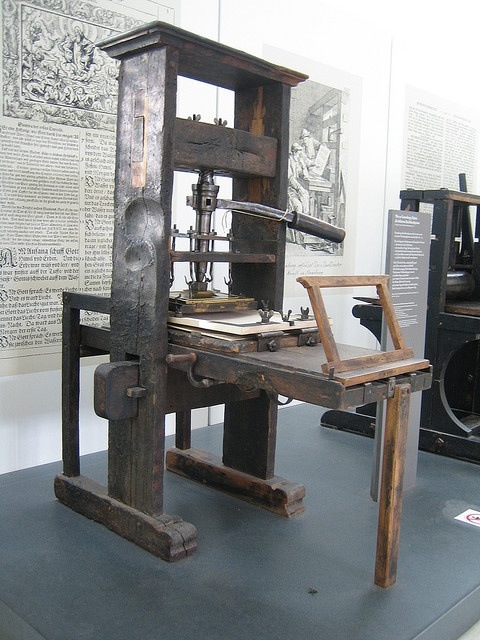
But there was one remarkable person who went unpublished during his time by the name of Leonardo da Vinci (1452–1519), who is best known as a great painter, sculptor, architect, musician, mathematician, engineer, inventor, anatomist, geologist, cartographer and botanist.
Leonardo was also aware of the camera obscura and the pin hole camera effect. The camera obscura literally means “dark chamber” in Latin. It is a box with a hole in it which allows light to go through and create an image onto a screen. This was an aid known to be used by Renaissance painters.
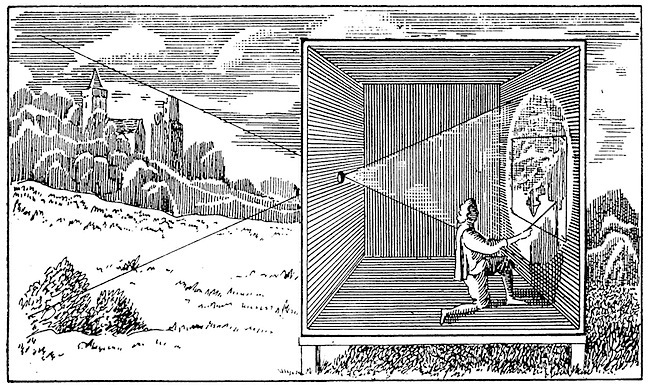
Earlier, a German philosopher, theologian and Catholic saint Albertus Magnus (1193–1280) experimented with photosensitive chemicals, including silver nitrate, the precursor to many other silver compounds, such as those used in photography. So the knowledge base was starting to build up by the time Leonardo was born.
Leonardo- The Man Behind the Shroud [1/6]
Some claim that he had a role in counterfeiting the death shroud of Christ (The Shroud of Turin), using early photographic techniques he developed, ages before its modern application. Apparently the cloth carbon dates back to between 1260 and 1390 (the image itself has not been carbon dated), and he would have possessed the brilliance to pull off such a stunt. (The claim is made in a National Geographic Channel documentary called “Leonardo: The Man Behind The Shroud” broadcast on the ABC on Sunday, July 1st, 2007. The theory is that an inferior “fake” shroud existed and that Leonardo was commissioned to replaced it, by the the powerful Savoy family, who owned the Shroud from the 1460s.)
Leonardo made important discoveries in anatomy, civil engineering, optics, and hydrodynamics, with his findings left as hand written notebooks that were originally loose papers of different types and sizes, documented in his mostly mirror-image cursive writing.

According to the Turkish-American author, scientist, and artist Bulent Atalay the author of “Math and the Mona Lisa: the Art and Science of Leonardo da Vinci” and “Leonardo’s Universe: the Renaissance World of Leonardo da Vinci”:
“Leonardo had anticipated many of the developments that would be associated with the Scientific Revolution. He had created anatomical drawings superior to those of Vesalius, and made statements seemingly prefiguring Darwinian evolution. He had performed fundamental studies in optics, and left notes with compelling evidence he had even experimented with both the refracting telescope and the reflector (The Tycho Crater on the moon, invisible to the naked eye, is seen in one of his drawings. Since none of his discoveries were published in his time, and indeed since 75-80% of his papers were lost permanently within a generation or two after his death, his works would not stimulate future development in the sciences. The tragedy of the paragon Renaissance man, universal genius Leonardo, is that although he was in the business of inventing the future, he would not be influencing the future. His scientific endeavors have to be regarded as a false start to the Scientific Revolution.”
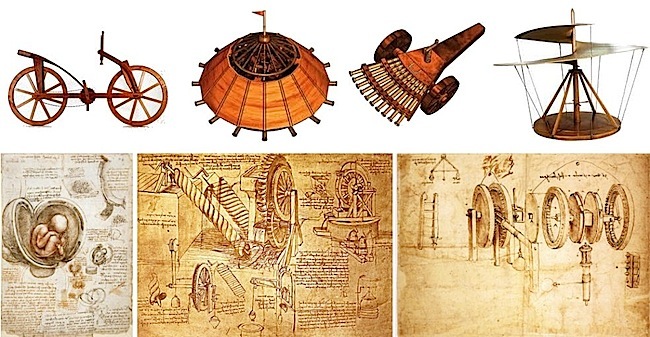
Many of the great scientific discoveries made during the Renaissance were in the area of astronomy. This was due to improvements in making lenses, which not only helped with making eyeglasses, and making it easier for people to learn from books, but also led to the invention of both the microscope and the telescope. In the future, lenses would also be an essential component of all forms of cameras.
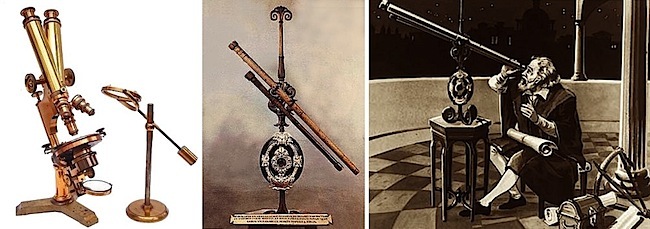
Early microscope and telescope
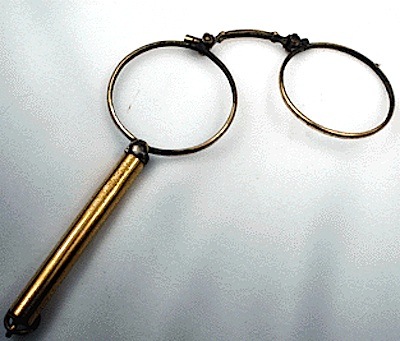
Galileo Galilei (1564-1642) not only looked at the stars, but used experiments to prove, or disprove, his theories. This process was refined by scientists such as Francis Bacon (1561–1626) and Isaac Newton (1642–1727), to further develop the scientific method.
Scientific researchers propose hypotheses as explanations of phenomena, and design experimental studies to test these hypotheses via predictions which can be derived from them. These steps must be repeatable, to guard against mistake or confusion in any particular experimenter.
The earliest known pendulum clock design was also conceived by Galileo Galilei around 1637, but it was never completed. The pendulum clock then patented by the Dutch scientist Christiaan Huygens (1629–1695) was invented in 1656, being influenced by Galileo’s work.
Part 2 shows how imagination played an important role in not only arriving at new concepts but predicting where the future may lead. The science fiction of yesteryear soon became the reality of today as the properties of light were explored and substances that reacted to it led to photography and the electric light, and as the properties of magnetism and electricity became understood, then more creative uses for these phenomena were found.








